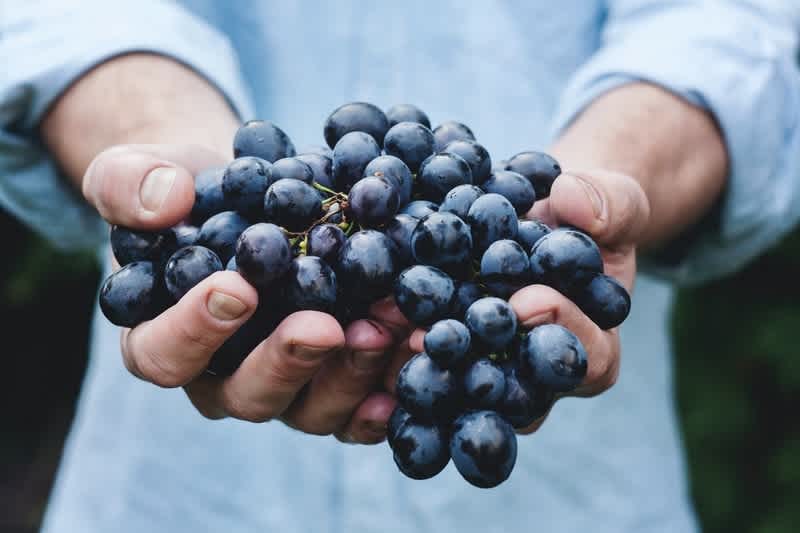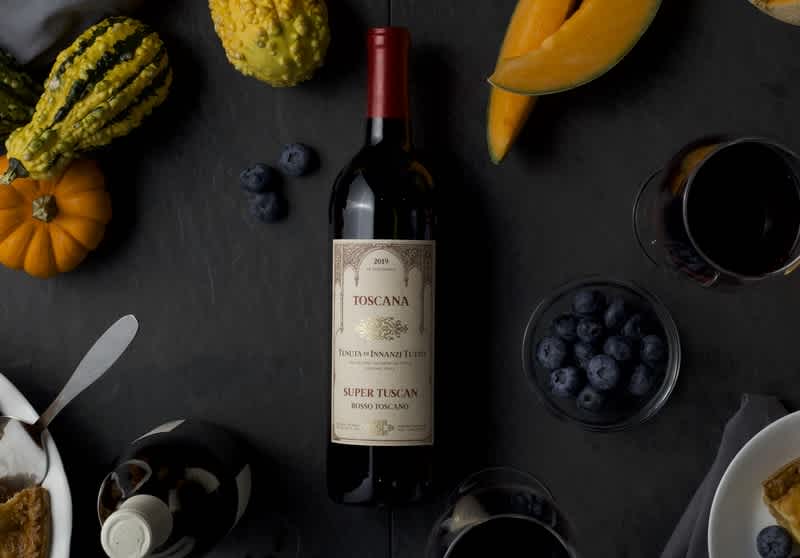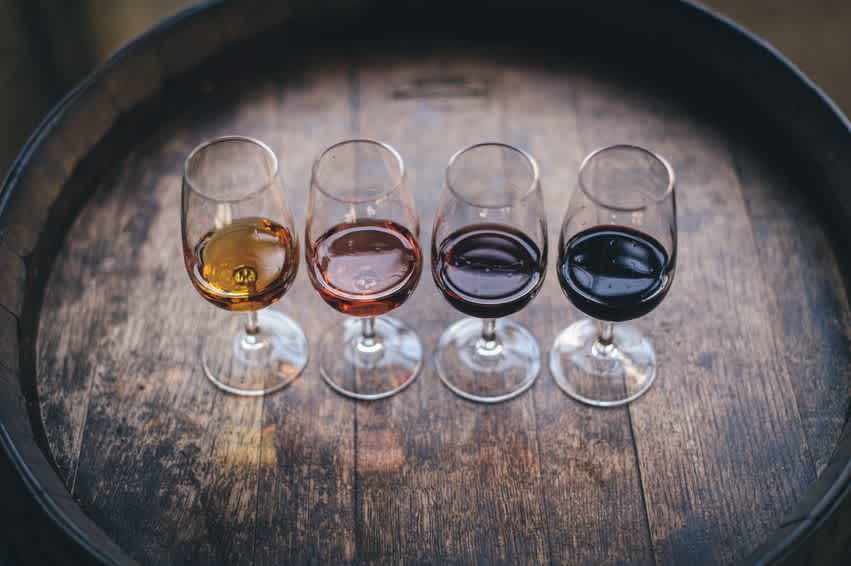Italian Wine Regions Every Wine Lover Should Know
These Italian wine regions reflect the country's deep-rooted wine culture.
Italy is home to many distinctive terroirs, styles, and indigenous grape varieties used to make world-class wines. And for food lovers, there's an equally delicious local pairing for every one of the unique wines. All across the country, incredible winemakers have transformed the landscape towards more refined and sustainable winemaking, with delicious results.
The past few decades have seen some of the most exciting developments yet for the modern Italian wine industry, with many producers across the country adopting organic and biodynamic agriculture in their fields to produce terroir-driven wines. In addition, a resurgence of interest in ancient grape varieties and winemaking techniques has invigorated Italian winemakers north to south. Regions that have been stagnant for decades or even centuries are now returning to producing thoughtful (and delicious) wines.
IN THIS ARTICLE:
What Are the Main Wine Regions of Italy?
Italy is one of the world’s best sources for wine, with thousands of active wineries. The combination of grape varieties, microclimates, and production techniques have enabled great regional diversity. Here is an introduction to the main Italian wine regions.
Northwest Italy
While Milan is the cultural center, the villages in Piedmont produce the best wines in the region using the Nebbiolo grape.
Piemonte (Piedmont)
With rich soils that nurture grapes and truffles alike, the Piemonte ("Piedmont," which means "at the foot of the mountains") is a study of elevations and aspects. With so many hills facing different directions, winemakers are very particular about where grapes are planted in their vineyards.
Hands down, the most respected wines in the region come from the Nebbiolo vineyards surrounding the villages of Barolo and Barbaresco. These wines have been called "The wine of kings and the king of wines." A bold statement, to be sure, but the wines made with this beautiful grape are enchantingly complex and a delight to ponder. Barolo DOCG wines are famous for having notes of tar and roses and with age notes of tobacco, truffles, and violets. Some of the best take decades to come to full maturation. Try wines from visionaries like Angelo Gaja and Bruno Giacosa for a taste of Piedmont, paired perfectly with Italian food staples like freshly made pasta spiked with truffles.
While Nebbiolo rules in Piedmont, Barbera (a blank canvas compared to Nebbiolo) makes fantastic wines that are a touch more accessible than Nebbiolo and excellent examples come from Asti, Nizza, and Alba. The most forgotten (but still delicious) red grape from the region is Dolcetto, which needs more coaxing to gain the right acidity to make fine wine.
Just north of Barolo and Barbaresco is the town of Asti which is known for producing the sparkling Moscato d'Asti from Moscato Bianco grapes.
Other Northwestern Italian Wine Regions
The Aosta Valley on the border with France in the Alps is the smallest region in the county but still produces some good Nebbiolo that is much less intense than the wines of Piedmont.

Take Our Quiz & Discover French Wines You'll Love
Join Firstleaf to taste delicious award-winning French wines delivered straight to your door. Take the quiz today to get the French Wine pairings for your individual palate.
Take The Quiz Today
Take Our Quiz & Discover French Wines You'll Love
Join Firstleaf to taste delicious award-winning French wines delivered straight to your door. Take the quiz today to get the French Wine pairings for your individual palate.
Take The Quiz TodayNortheast Italy
White grapes and sparkling wines rule the roost in northeastern Italy. The simple (and often refreshing) Pinot Grigio is grown throughout Italy but is most at home here. When only sparkling will do, many wine enthusiasts worldwide reach for a well-made Prosecco. These two wines represent the vast majority of the wine production for the region; however, just because they are the most famous wines doesn't mean that there aren't others worth knowing.
Prosecco
Prosecco, made with the (newly) renamed Glera grape variety, comes from the outskirts of Trieste on the border with Slovenia and is the largest DOC in the country. The very best Prosecco comes from the Conegliano Valdobbiadene DOCG.
Franciacorta
For fans of Champagne, there's Franciacorta made in the foothills of the Alps south of Lake Iseo. They make oustanding sparkling wine using the Champagne method and grapes (Chardonnay, Pinot Noir, and some Pinot Bianco).
Alto Adige
This German-speaking, French grape-growing, autonomous region runs from near the border with Austria down to Verona. Here you can find the ubiquitous Pinot Grigio and standouts like the golden Moscato Giallo, Gewürztraminer, Teroldego, Sauvignon Blanc, Mueller-Thurgau, Lagrein, and even the occasional Pinot Noir.
The same international grapes grown in Franciacorta are also used to make sparkling wine in Alto Adige. The best sparkling wine in the region comes from the high slopes of the Trento DOC.
The Verona Hills
At the south end of Lake Garda, running east to the village of Valpolicella and then to Soave, are rolling verdant hills with rich soils that grow Garganega and Verdicchio by the ton. While some of these would be considered uninspired, generic wines, a well-made Soave will leave you wishing more wines were as jam-packed with lemon and almond flavor. The brooding Corvina and Rondinella-based recioto sweet wines and Amarone of Valpolicella will likewise give you a taste of the region that you can't get anywhere else.
Emilia-Romagna
Emilia-Romagna is a large region that spans from the Adriatic Sea to the Apennine spine that separates it from central Italy. While Lambrusco, a sparkling red varietal wine, is the most well-known from the area, there are good examples of Malvasia, Barbera, Cabernet Sauvignon, and Pinot Noir. However, the rising tide of great passito wines (wines that have been hand-harvested and dried in the sun before pressing to concentrate the flavor and remove moisture) is possibly the most exciting development in Emilia-Romagna.
Friuli-Venezia Giulia
The last region of note is Friuli (Friuli-Venezia Giulia) in the far northeastern corner of Italy on the border (and spilling into) Slovenia. This region was previously known for fine white wines but has more recently become associated with the amber wines of Josko Gravner, a pioneer of natural winemaking. These wines are made by fermenting white wine grape juice with the skins and pips in the same way red wine is made, which imparts an amber or orange color to the wine and adds texture and tannin.
Central Italy
When most people imagine "Italian wine country," it's the Tuscan hills between Florence and Siena that haunt their imaginations. It's one of the most picturesque places on Earth, with story-book-perfect landscapes that produce amazing wines. The Apennine Mountains roll down to the Tyrrhenian coast and hold some of the most prized vineyards in the world: Chianti, Montalcino, Montepulciano, and the Maremma Toscana.
Tuscany
Like Italy itself, Tuscany is no one thing. This famous region has a wide range of elevations, aspects, grapes varieties, and wine styles that differ drastically from village to village. However, if one thing is ubiquitous, it's Sangiovese. Driving through this region will show you conclusively that Sangiovese is Italy's most planted variety.
Tuscany is also home to what is probably Italy's most well-known wine "brand," Chianti. This (primarily, but sometimes entirely) Sangiovese-based wine can be transcendent when made well but has a checkered past.
The organization of DOCGs in the 1960s did nothing to address the poorly made wines of Chianti at the time. So, producers began to blend their Italian grapes with French varieties like Cabernet Sauvignon and Merlot to create a new category called the "Super Tuscan." Many producers opted to make wines with primarily international varieties and abandoned their Sangiovese vines.
Thankfully this trend has died out. The best producers are making more and more Chianti Classico or Chianti Classico Riserva which are at least 80% Sangiovese from the best vineyards and grapes. The two most famous sub-regions in Tuscany for serious Sangiovese are Montalcino and Montepulciano.
Tuscan wines are more than just Sangiovese, and some producers (especially closer to the coast in Maremma) grow international varieties that thrive in the warmer Mediterranean climate. The most exquisite and sought-after white wines are the Trebbiano and Malvasia-based dessert wines called Vin Santo or "Holy Wine."
Umbria
South of Tuscany lies the interior region of Umbria. While they grow some good Sangiovese, the Sagrantino's from Montefalco are the most notable wines in this region. This grape has incredibly high tannins and huge flavors that can age almost indefinitely if made correctly.
Lazio
The wines of Lazio (the region surrounding Rome) are mostly whites made with the little-known local grapes Marino and Frascati.
Abruzzo & Marche
Along the Adriatic Coast, the lesser-known Abruzzo and Marche regions are producing exciting wines worth consideration. In particular we love the Verdicchio of the Marche, the Pecorino of Terre di Chieti, and the Montepulciano from Abruzzo.
Southern Italy
The major wine regions of Ancient Rome aren't as revered as they once were, but there are still some fantastic wines to be found in the sun-drenched vineyards of southern Italy.
Campania
The hills surrounding Naples boast fertile, volcanic soil that produces some of the best wines in southern Italy. The vineyards around Mount Vesuvius, in particular, are perfect for Aglianico, a red grape that makes powerful and dark wines.
Along the southwest coast of Campania, the Falanghina grape is used to make crisp white wines. The cooling coastal breeze and sunshine on the steeply terraced vineyards overlooking the Mediterranean keep the grapes happy. The best examples come from the isle of Capri, Ischia, and the Amalfi Coast.
Calabria
The warm climate is the most notable aspect of this formerly revered Italian wine region. Still, some producers are slowly working to increase the quality of the wines with better practices in the vineyard and the winery.
Puglia
For many years the heel of the Italian boot produced mass amounts of grapes used across the country to bulk up generic blends, and many of the indigenous grape varieties were on the verge of extinction or irrelevance. Thankfully this is no longer the case.
The Negroamaro variety of Puglia is used to make dark, bitter reds and a delightfully fruity rosé. Primitivo (Zinfandel) has been used here for at least two centuries and has enjoyed a resurgence in popularity over the past few decades.
Italian Islands
The large islands off the central and southwest coast of Italy have ancient winemaking cultures all their own.
Sicily
To say that Sicily's fortunes have changed in the last two decades is an understatement. They have gone from sleepy industrial winemaking to a terroir-driven gold rush on the slopes of Mt. Etna. But, of course, it also doesn't hurt that they have 6,000 years of local wine history to draw from. Some of the most exciting winemakers have bridged the gap by reviving select ancient winemaking techniques with modern winemaking know-how.
Mt. Etna boasts a high concentration of old vines growing in volcanic soils and produces some of Italy's most exciting wines. The wines made with the indigenous grape Nerello Mascalese are nuanced and showcase the terroir of individual vineyards. This explosion of refined winemaking is drawing apt comparisons to Burgundy's Côte d'Or. White Etna wines are made using Carricante and are sold under the name Etna Bianco Superiore.
Nero d'Avola is used elsewhere for rich red wines. It's also worth seeking out Marsala—a fortified wine that is being reinvented by young Sicilians.
Sardinia (Sardegna)
Off the coast of central Italy is Sardinia, another island with an ancient winemaking culture. Unique grape varieties thrive here, but the two most common wines are made from the red Cannonau (Grenache) and white Vermentino.
Pantelleria:
A volcanic island closer to Africa than Sicily, Pantelleria is special for producing one of the finest dessert-style Muscat wines in the world.
Conclusion
The variety of grapes and the endless list of regions and sub-regions of Italy is truly staggering. Any wine lover would be lucky to spend time traveling the county and tasting some of the finest wine on Earth. Even exploring from home, there's guaranteed to be an Italian wine for every palate.
IN THIS ARTICLE

WinePrint™ by Firstleaf
Are you looking to learn more about your wine preferences? Check out our Wine Print for an in-depth look at your personal tasting profile. Discover your favorite wines, varietals, regions, and tasting notes and get personalized recommendations wherever you are.
Learn More


